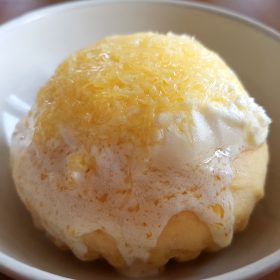Ensaymada is a symbol of Filipino pastry that reflects the country’s Spanish influence in food during the 400-year occupation. These sweet and buttery treats are soft, fluffy, and usually topped with butter, sugar, and grated cheese. In recent years, the growth to vary the flavors has been very evident in the baking scene. Now you may find ensaymadas with toppings or flavors such as ube, caramel, oreo, red velvet, chocolate, and many others. These flavors can easily be ordered via Amor Kitchen by sending us a message. Special ensayamadas, however, may come as big as a size of a plate topped with sliced salted eggs. Try this recipe at home and flavor it the way you want it! Add flavors using ube or pandan from About Flavors.

TIP
Dissolve yeast in warm water with a temperature anywhere between 100-110°F (38°C). Proof yeast, add one tablespoon sugar and let stand for 10 minutes. If the mixture doubles in volume then the yeast is active. It is very important to make sure that the yeast is active. Water that is too hot kills the yeast so make sure that the water temperature is around 100-110°F (38°C). Remember also to be patient. Let the bread rise and you will be rewarded. Trust me.
